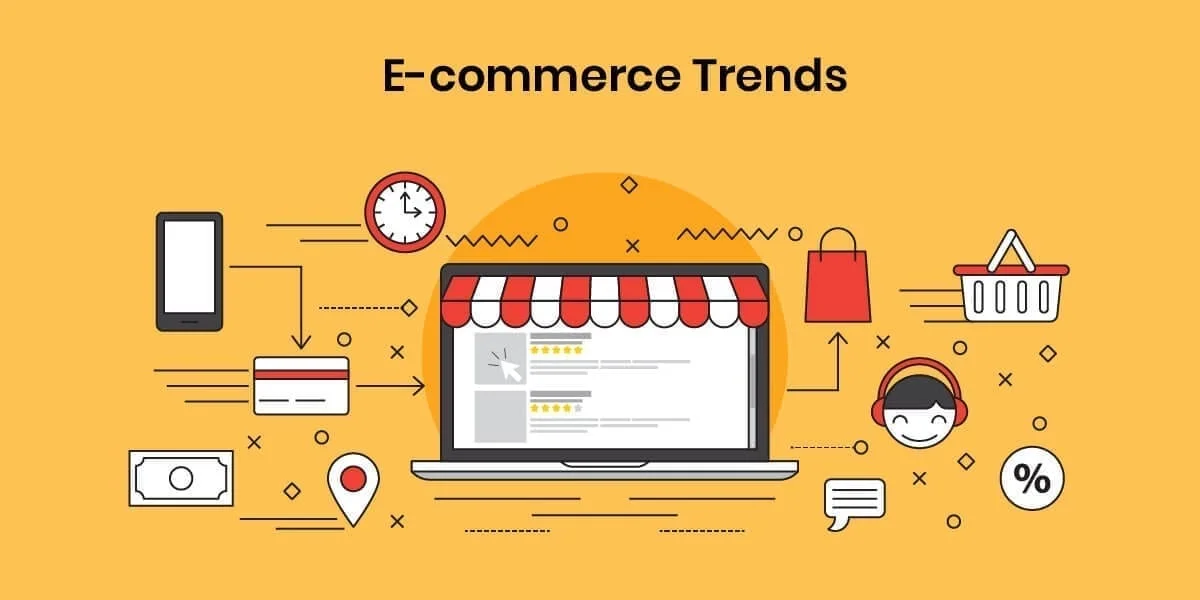Trends in E-commerce
Trends in E-commerce
In the dynamic realm of e-commerce, change is the only constant. As we navigate through the digital age, the landscape of online retail is continually evolving, driven by technological advancements, shifting consumer behaviors, and innovative business strategies. Let’s embark on a journey to explore some of the most captivating trends shaping the future of e-commerce.
1. Rise of Social Commerce
The convergence of social media and e-commerce has given birth to ‘social commerce,’ where shopping experiences are seamlessly integrated into social platforms. From shoppable posts on Instagram to live-stream shopping events on TikTok, brands are leveraging social media channels to engage customers and drive sales in innovative ways.
2. Personalization and AI-Powered Recommendations
Gone are the days of one-size-fits-all marketing. With advancements in artificial intelligence (AI) and machine learning, e-commerce platforms are now capable of delivering personalized shopping experiences tailored to individual preferences and behaviors. From personalized product recommendations to dynamic pricing strategies, AI is revolutionizing how online retailers engage with customers.
3. Augmented Reality (AR) and Virtual Try-Ons
The adoption of AR technology is transforming the online shopping experience, particularly in sectors like fashion and beauty. Virtual try-on tools allow customers to visualize products in real-world settings, enhancing confidence in their purchase decisions and reducing return rates. As AR technology becomes more accessible, its integration into e-commerce platforms is poised to become ubiquitous.
4. Sustainable and Ethical E-commerce
Consumer awareness and demand for sustainable and ethically sourced products are driving e-commerce brands to prioritize sustainability initiatives. From eco-friendly packaging options to transparent supply chain practices, brands that demonstrate a commitment to sustainability are gaining a competitive edge and fostering customer loyalty.
5. Direct-to-Consumer (DTC) Brands
The DTC model, characterized by brands selling directly to consumers without intermediaries, is gaining momentum across various industries. DTC brands leverage data-driven insights, agile supply chains, and compelling storytelling to build direct relationships with customers, offering unique products and experiences that differentiate them in the crowded e-commerce landscape.
6. Mobile Shopping and Seamless Checkout Experiences
With the proliferation of smartphones, mobile shopping continues to dominate e-commerce transactions. Brands are optimizing their mobile platforms for speed, usability, and intuitive navigation, while also focusing on streamlining the checkout process to minimize friction and enhance conversion rates.
7. Subscription and Membership Models
The subscription e-commerce model, characterized by recurring payments in exchange for regular product deliveries or exclusive benefits, is experiencing rapid growth. From subscription boxes offering curated products to membership programs providing access to premium content and perks, this trend is reshaping customer loyalty and revenue streams in e-commerce.
The e-commerce landscape is a vibrant tapestry of innovation, adaptation, and transformation. As we embrace captivating trends, it’s clear that the future of online retail is filled with opportunities for brands to connect with customers in meaningful ways, and shape the next chapter of the e-commerce evolution. Whether you’re a seasoned retailer or a budding entrepreneur, staying informed and agile in this ever-changing landscape is key to success in the digital age.
FOLLOW us on all our social media platforms and stay updated. X Facebook


